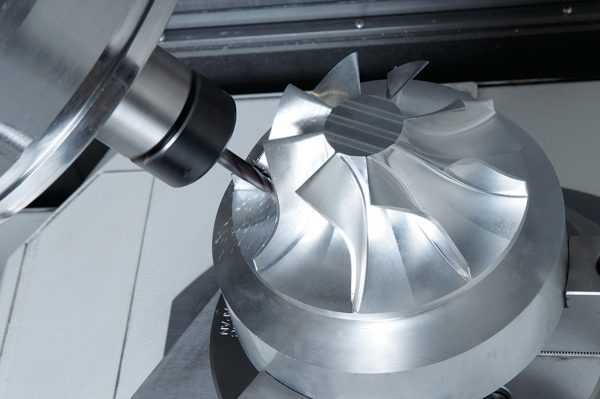What is Rapid Prototyping and how can it Benefit your Business?
 Accuracy: While rapid prototyping service can create highly detailed and exact models, there may be limitations on the accuracy of the final product compared to the final manufactured product. Rapid prototyping has reworked the manufacturing industry by providing a faster, extra value-efficient technique to create and check product designs. With the power to create extremely detailed and exact models quickly and easily, rapid prototyping service permits firms to maneuver shortly and stay forward of the competitors. While there are some challenges related to rapid prototyping service, the advantages outweigh the dangers for many companies. Through the use of this technology, companies can create functional prototypes that precisely symbolize the ultimate product, while additionally saving money and time by figuring out design flaws early on in the product growth course of. In addition, some companies could choose to spend money on their own rapid prototyping tools, permitting them to create physical prototypes in-house. This can be a major investment, but also can provide additional advantages equivalent to greater control over the prototyping course of and faster turnaround occasions. As expertise continues to evolve, so does the world of rapid prototyping service. As 3D printing technology becomes more advanced, we can count on to see even larger capabilities in rapid prototyping service, akin to the power to create prototypes with multiple supplies and colors, and even the power to create functioning electronic elements. These developments will proceed to drive innovation in the manufacturing industry, allowing firms to create better merchandise quicker and extra cost-effectively. Overall, rapid prototyping is a game changer for the manufacturing trade, offering a quicker and extra price-effective technique to create and test product designs. If you’re trying to stay ahead of the competitors, consider investing in rapid prototyping service for your business. With its many benefits, it’s sure to be a helpful asset to your product improvement process.
Accuracy: While rapid prototyping service can create highly detailed and exact models, there may be limitations on the accuracy of the final product compared to the final manufactured product. Rapid prototyping has reworked the manufacturing industry by providing a faster, extra value-efficient technique to create and check product designs. With the power to create extremely detailed and exact models quickly and easily, rapid prototyping service permits firms to maneuver shortly and stay forward of the competitors. While there are some challenges related to rapid prototyping service, the advantages outweigh the dangers for many companies. Through the use of this technology, companies can create functional prototypes that precisely symbolize the ultimate product, while additionally saving money and time by figuring out design flaws early on in the product growth course of. In addition, some companies could choose to spend money on their own rapid prototyping tools, permitting them to create physical prototypes in-house. This can be a major investment, but also can provide additional advantages equivalent to greater control over the prototyping course of and faster turnaround occasions. As expertise continues to evolve, so does the world of rapid prototyping service. As 3D printing technology becomes more advanced, we can count on to see even larger capabilities in rapid prototyping service, akin to the power to create prototypes with multiple supplies and colors, and even the power to create functioning electronic elements. These developments will proceed to drive innovation in the manufacturing industry, allowing firms to create better merchandise quicker and extra cost-effectively. Overall, rapid prototyping is a game changer for the manufacturing trade, offering a quicker and extra price-effective technique to create and test product designs. If you’re trying to stay ahead of the competitors, consider investing in rapid prototyping service for your business. With its many benefits, it’s sure to be a helpful asset to your product improvement process.
 Rapid Prototyping (RP) enables the quick fabrication of physical fashions using three-dimensional pc aided design (CAD) information. Utilized in a wide range of industries, Rapid prototyping permits students to turn innovative ideas into profitable end parts quickly and effectively. Fewer low volume manufacturing design flaws and higher end-merchandise! Rapid prototyping methods emerged in 1987 with the introduction of stereolithography technology, a course of that solidifies layers of ultraviolet gentle-sensitive liquid polymer using laser expertise. When you loved this information and you would like to receive more information regarding cnc machining generously visit our own web site. In subsequent years, different rapid prototyping technologies have been introduced, such as: Fused Deposition Modeling (FDM), Selective Laser Sintering and Laminated Object Manufacturing. The industry’s very first 3D rapid prototyping system based mostly on FDM Technology was introduced in April, 1992, by Stratasys. How does Rapid Prototyping Work? Rapid Prototyping, also referred to as 3D printing, is an additive manufacturing expertise. The method begins with taking a digital design from modeling or computer aided design (CAD) software program. The 3D printing machine reads the data from the CAD drawing and lays down successive layers of liquid, powder, or sheet metal part materials – constructing up the physical mannequin from a series of cross sections. These layers, which correspond to the virtual cross part from the CAD model, are mechanically joined together to create the final shape. Rapid Prototyping makes use of a normal data interface, implemented as the STL file format, to translate from the CAD software program to the 3D prototyping machine. The STL file approximates the form of a part or assembly using triangular aspects. Typically, Rapid Prototyping systems can produce 3D fashions inside just a few hours. Yet, this can vary extensively, relying on the type of machine getting used and the size and variety of models being produced.
Rapid Prototyping (RP) enables the quick fabrication of physical fashions using three-dimensional pc aided design (CAD) information. Utilized in a wide range of industries, Rapid prototyping permits students to turn innovative ideas into profitable end parts quickly and effectively. Fewer low volume manufacturing design flaws and higher end-merchandise! Rapid prototyping methods emerged in 1987 with the introduction of stereolithography technology, a course of that solidifies layers of ultraviolet gentle-sensitive liquid polymer using laser expertise. When you loved this information and you would like to receive more information regarding cnc machining generously visit our own web site. In subsequent years, different rapid prototyping technologies have been introduced, such as: Fused Deposition Modeling (FDM), Selective Laser Sintering and Laminated Object Manufacturing. The industry’s very first 3D rapid prototyping system based mostly on FDM Technology was introduced in April, 1992, by Stratasys. How does Rapid Prototyping Work? Rapid Prototyping, also referred to as 3D printing, is an additive manufacturing expertise. The method begins with taking a digital design from modeling or computer aided design (CAD) software program. The 3D printing machine reads the data from the CAD drawing and lays down successive layers of liquid, powder, or sheet metal part materials – constructing up the physical mannequin from a series of cross sections. These layers, which correspond to the virtual cross part from the CAD model, are mechanically joined together to create the final shape. Rapid Prototyping makes use of a normal data interface, implemented as the STL file format, to translate from the CAD software program to the 3D prototyping machine. The STL file approximates the form of a part or assembly using triangular aspects. Typically, Rapid Prototyping systems can produce 3D fashions inside just a few hours. Yet, this can vary extensively, relying on the type of machine getting used and the size and variety of models being produced.
Rapid prototyping machines can build bigger parts, so you possibly can build a larger prototype or make a model that’s the precise size of the product. Rapid prototyping can use more supplies than 3D printers. Rapid prototyping machinery can handle specialty supplies like metals, and 3D printers typically use plastics. Moreover, you may produce purposeful parts using rapid prototyping, making it appropriate for idea modeling. A 3D printer may be easier and less complicated to use, making it good for hobbyists. Professionals may desire the more detailed outcomes that rapid prototyping can present. The underside line is that 3D printing is the easier model of rapid prototyping, which may produce more accurate results. Hence, rapid prototyping is most popular in the pc, aircraft, and within the automotive sectors. Certainly one of the main industrial makes use of of rapid prototyping is building circuit board assemblies. Reputable electronic design and circuit board meeting service providers use rapid prototyping to assist industrial, automotive, medical, aerospace, military, and telecommunications markets create correct models or custom electronics for his or her distinctive needs.
What’s Rapid Prototyping? Rapid prototyping, often known as additive manufacturing or 3D printing, is a course of that builds up layers of fabric to create a three-dimensional object. It has revolutionized the product development cycle by significantly lowering the time and value traditionally associated with creating prototypes. Is Rapid Prototyping the identical as 3D Printing? When the know-how was first developed, 3D printing was so synonymous with rapid prototyping that the 2 phrases were interchangeable. Whether referencing “3D printing,” “rapid prototyping,” or “RP,” the dialog usually all referred to the same thing. Still, rapid prototyping was the first and remains the largest application for 3D printing. Iterations from proof-of-concept by means of to functional prototype can all be 3D printed. Whether outsourced or in-house, utilizing 3D printers speeds up the rapid prototyping considerably by means of eradicating conventional bottlenecks in tooling and/or delivery. Rapid prototyping may also more and more be done using the identical 3D printing technology as might be used for the ultimate product. Certainly one of the main the explanation why rapid prototyping is significant within the innovation process is its capacity to speed up the design cycle.
